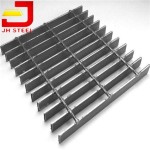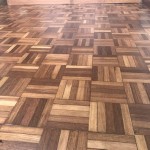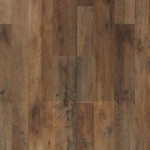How To Measure Angles for Laminate Flooring: A Comprehensive Guide
Laminate flooring is a popular choice for homeowners due to its durability, aesthetic appeal, and relatively easy installation. However, successful laminate flooring installation requires precision, especially when dealing with corners and irregular room shapes. Accurately measuring angles is crucial for creating seamless transitions and a professional finish. This article provides a detailed guide on how to measure angles for laminate flooring, ensuring a precise fit and minimizing waste.
Before commencing any angle measurement, it is essential to gather the necessary tools. These include a pencil, measuring tape, protractor (or angle finder), a speed square (optional but recommended), a notepad, a calculator, and the laminate flooring itself. Having all tools readily available streamlines the process and minimizes disruptions. Ensure the pencil is sharp and the measuring tape is accurate. Digital angle finders, while more expensive, can provide the most precise measurements, especially for complex angles.
The environment in which the measurements are taken also plays a critical role. The room should be well-lit to ensure clear visibility. Remove any obstacles, such as furniture or debris, that may hinder accurate measurement. Ensure the subfloor is clean and level. Uneven subfloors can affect the accuracy of angle measurements, ultimately impacting the fit of the laminate flooring. Address any subfloor issues before proceeding with the measurement process.
Determining the Type of Angle: Interior vs. Exterior
The first crucial step is to identify whether you are measuring an interior or exterior angle. This distinction is important because the method of measurement will differ slightly. An interior angle is an angle formed inside a room, such as the corner where two walls meet. An exterior angle is formed on the outside of a room, for example, around a bay window or an exterior wall protrusion. Accurately identifying the angle type is fundamental for achieving a precise laminate flooring installation.
For interior angles, the goal is to determine the angle formed by the intersection of two walls. These angles are typically less than 180 degrees. For exterior angles, you are measuring the angle formed on the outside of the walls, which can be greater than 180 degrees. A common mistake is to assume all corners are 90 degrees. In reality, walls are rarely perfectly square, especially in older homes. This necessitates accurate angle measurement for a professional finish.
Once the type of angle is determined, proceed with the appropriate measurement technique. Using the wrong technique can lead to inaccurate measurements and require significant rework during the installation phase.
Measuring Interior Angles
There are several methods for measuring interior angles. The most common and straightforward methods involve using a protractor, a speed square, or an angle finder. Regardless of the tool used, precision is paramount. Ensure the tool is properly aligned with the walls or surfaces being measured.
Using a Protractor: Place the base of the protractor along one wall, ensuring it is flush against the wall surface. Align the center point of the protractor with the corner where the two walls meet. Observe where the adjacent wall intersects the protractor's arc and read the angle measurement. Record this measurement in your notepad. Repeat the process several times to ensure consistency and accuracy. If the readings vary slightly, take the average of the measurements.
Using a Speed Square: A speed square is primarily designed for measuring 90-degree angles, but it can also be used to create a reference point for measuring other angles. Place one edge of the speed square against one wall, ensuring it is perfectly perpendicular to the wall. Then, measure the distance from the other wall to the corresponding edge of the speed square. Use trigonometric functions (tangent) to calculate the angle. While this method requires some mathematical knowledge, it can provide a precise measurement when executed correctly.
Using an Angle Finder/Digital Protractor: Digital angle finders provide the most accurate readings and simplify the measurement process. Place the arms of the angle finder against the two walls, ensuring they are flush with the surfaces. The digital display will provide the precise angle measurement. These devices are particularly useful for measuring complex or obtuse angles. Invest in a high-quality angle finder for reliable and accurate results. Some models also allow you to save measurements directly, reducing the risk of errors.
After obtaining the angle measurement, determine the angle at which to cut the laminate flooring. Typically, you will divide the interior angle by two, as the cut will be made on each piece of laminate to form the mitered corner. This ensures that the two pieces of laminate will meet perfectly at the corner, creating a seamless transition. For example, if the interior angle is 90 degrees, each piece of laminate will need to be cut at a 45-degree angle.
Measuring Exterior Angles
Measuring exterior angles requires a slightly different approach. The primary difference lies in determining the supplementary angle needed for cutting the laminate flooring. The supplementary angle is the angle that, when added to the exterior angle, equals 360 degrees. This supplementary angle is crucial for accurate laminate flooring cuts.
Using a Protractor: Extend the sides of the exterior angle with a straight edge or ruler if necessary. Place the base of the protractor along one side of the angle, ensuring the center point aligns with the vertex of the angle. Read the angle measurement where the other side of the angle intersects the protractor's arc. Subtract this measurement from 360 degrees to determine the supplementary angle. This supplementary angle is then used to calculate the necessary cut angles for the laminate flooring.
Using an Angle Finder/Digital Protractor: Digital angle finders can also simplify the measurement of exterior angles. Place the arms of the angle finder against the exterior surfaces, ensuring they are flush. The digital display will provide the angle measurement. If the angle finder displays a value less than 180 degrees, you may need to manually calculate the exterior angle and then determine the supplementary angle. Alternatively, some angle finders have a function to directly measure angles greater than 180 degrees.
After determining the supplementary angle, divide it by two to calculate the cutting angle for each piece of laminate flooring. For example, if the exterior angle is 270 degrees, the supplementary angle is 90 degrees (360 - 270 = 90). Therefore, each piece of laminate must be cut at a 45-degree angle (90 / 2 = 45) to create a perfect mitered corner.
For complex exterior angles, it may be beneficial to create a cardboard template. This template can be used to test the fit of the laminate pieces before making the final cuts. Using a template minimizes waste and reduces the risk of errors.
It is important to remember that walls are rarely perfectly straight. Therefore, multiple measurements should be taken along the length of the wall to account for any variations. This ensures that the laminate flooring fits snugly against the wall, minimizing gaps and creating a professional finish.
When working with irregularly shaped rooms, dividing the room into smaller, more manageable sections can simplify the angle measurement process. Measure the angles of each section separately and then piece together the laminate flooring accordingly. This approach is particularly useful for rooms with multiple corners or curved walls.
Always double-check your measurements before cutting the laminate flooring. Errors in measurement can lead to wasted material and require additional time and effort to correct. Take your time, be precise, and use the appropriate tools and techniques to ensure accurate angle measurements.
Furthermore, account for expansion gaps when cutting the laminate flooring. Laminate flooring expands and contracts with changes in temperature and humidity. Leaving a small gap between the laminate flooring and the wall allows for this expansion and contraction, preventing buckling or warping of the floor.
Transferring Measurements to Laminate Flooring
Once the angles have been accurately measured, the next step is to transfer these measurements onto the laminate flooring. This requires careful attention to detail and the use of appropriate tools. A pencil, a T-bevel, and a sharp cutting tool (such as a miter saw or a jigsaw) are essential for this process.
Using the T-bevel, set the blade to the calculated cutting angle. Tighten the wing nut to secure the blade at the desired angle. Place the base of the T-bevel against the edge of the laminate flooring and trace the angle onto the surface with a pencil. Ensure the line is clear and precise for accurate cutting.
For straight cuts, use a speed square or a straight edge to draw a perpendicular line across the laminate flooring. This line will serve as a guide for the cutting tool. Accuracy is crucial at this stage to ensure a clean and professional finish.
When cutting the laminate flooring, always wear appropriate safety gear, including safety glasses and gloves. Use a miter saw for precise angle cuts. For curved cuts, a jigsaw is recommended. Follow the manufacturer's instructions for operating the cutting tool safely and effectively.
Make a practice cut on a scrap piece of laminate flooring to ensure the angle is correct before cutting the actual flooring. This allows you to adjust the angle if necessary, minimizing waste and preventing errors. Check the fit of the cut piece against the wall or corner to ensure it matches the measured angle. If the fit is not perfect, make small adjustments to the cutting angle until the desired result is achieved.
After cutting the laminate flooring, clean the edges to remove any burrs or splinters. This will ensure a smooth and seamless transition between the pieces. Use a sanding block or a utility knife to clean up the edges.
By following these steps, you can accurately measure angles for laminate flooring and achieve a professional-looking installation. Remember to take your time, be precise, and use the appropriate tools and techniques to ensure a successful outcome. Accurate angle measurement is the foundation for a flawless laminate flooring project.

Installing Laminate Cutting Angles Diy

How To Cut Odd Angles On Lvp Flooring Subscribe So I Can Keep Making S Like This One

How To Measure And Cut Angles On Vinyl Plank Flooring Installation

How To Measure And Cut Angles On Vinyl Plank Flooring Installation

How To Measure And Cut Angles For Laminate Flooring

How To Measure And Cut Angles For Laminate Flooring

Easy Molding And Trim Work Trick Figuring Out Tricky Angles For The Creek Line House

Angle Laminate And Vinyl Flooring Installation Tips

Iheart Organizing Do It Yourself Floating Laminate Floor Installation

Cutting Laminate Around Corners Diy Tips
Related Posts








